The first light and floating tanks of the USSR in the interwar period
The case has helped in this matter. In the course of the Civil War, under Odessa, the Red Army captured a party of the best light tanks from the time of Perovoi World War I, French tanks Renault FT17, which for some time were exploited by the Red Army and participated in the battles. The study and operating experience of the FT17 tanks pushed the Soviet government to organize the production of its tanks. In August 1919, the decision of the Council of People's Commissars on the organization of the production of tanks in Nizhny Novgorod at the factory "Red Sormovo". One disassembled FT17 tank was sent to the factory, however, it lacked the engine and gearbox. In a short time, documentation was developed for the tank and other factories were connected: Izhorsky Zavod for the delivery of armor plates, the Moscow AMO plant supplied the Fiat automobile engine produced at this plant, and the Putilov factory supplied armament.
In the 1920-1921, 15 Russian Renault tanks were manufactured. They entered service with the Red Army, but did not take part in the hostilities.
Light tank "Russian Reno"
The tank "Russian Renault" was almost completely copied from its prototype FT17 and repeated its design. According to the layout, it was a single-tanked tank with light armor weighing 7 tons and a crew of two people - the commander and driver. The control compartment was located in front of the tank, there was provided for the place of the driver. Behind the squad of command was a fighting squad with a rotating turret, where the commander-gunner was located standing or sitting on a canvas loop. The engine compartment was located in the stern of the tank.
The tank hull structure was riveted and assembled from rolled armor plates on the frame with rivets, the tower was also riveted, and the front sheets of the hull and towers had large angles of inclination. On the roof of the tower was an armored cap to observe the terrain. The tank provided a fairly good view through the viewing slots in the hull and turret. The tank had anti-bullet protection, the thickness of the 22mm turret armor, the forehead and sides of the 16mm hull, the bottom and the roof (6,5-8) mm.
The AMO engine with a power of 33,5 hp, developed on the basis of the Fiat automobile engine, providing 8,5 km / h speed and 60 km cruising range was used as a power plant.
Armament of the tank was in two versions, cannon or machine gun. A short-barreled 37 mm gun of the Hotchkiss L / 21 (Pute CA-18) or 8mm Hotchkiss machine gun was installed in the turret. Vertically, the gun was induced with the help of a shoulder rest; the tower was turned along the horizon with the help of the muscular strength of the commander. On some later models, a twin gun and a machine gun were installed in the turret.
The undercarriage of the tank was “semi-rigid” and did not differ in principle from the FT17 undercarriage and on each side contained 9 twin small diameter diameter roller wheels with internal flanges, 6 dual support rollers, front guide wheel and rear drive wheel. The road wheels were interlocked into four carts, the carts were connected in pairs by means of a hinge with balancers, which, in turn, were hingedly suspended from semi-elliptical steel springs. The ends of the springs were suspended from a longitudinal beam attached to the side of the tank hull. The whole structure was covered with armor plates.
In general, the Russian Renault tank, being a copy of the French FT17, was a completely modern machine at that time and did not yield to its prototype in its characteristics, and even exceeded it in maximum speed. This tank was in service before the 1930 year.
Light tank T-18 or MC-1
In 1924, the military command decided to develop a new Soviet tank, the Russian Renault tank was considered to be inactive and poorly armed. The 1925-1927 developed the first mass-produced Soviet light tank MC-1 (“Small escort”) or T-18 for tracking and fire support of infantry. The basis of the tank was taken by the ideas of the French FT17, the production of the tank was entrusted to the Leningrad plant "Bolshevik".
In 1927, a prototype tank was produced, which received the T-16 index. Outwardly, he looked like the same FT17, but it was a different tank. The engine was located across the hull, the length of the tank was reduced, there was a fundamentally different chassis, the tail was kept at the stern to overcome obstacles. According to the test results, the tank was modified and the second sample was made with the T-18 index, which confirmed the specified characteristics. In 1928, the mass production of the T-18 tank began.
According to the layout, the T-18 had a classic scheme with the location of the control compartment in the frontal part of the hull, followed by the fighting compartment with a rotating turret and in the aft engine compartment. The armament was located in the turret, on the roof of the turret there was a commander's turret for observation and a manhole for landing the crew. The weight of the tank was 5,3 tons, the crew was two people.
The hull of the tank was riveted and assembled on a frame of rolled armor plates. The armor protection of the tank was from small weapons, the thickness of the armor of the tower, forehead and sides of the hull 16 mm, roof and bottom 8 mm.
The armament of the tank consisted of a short-barreled 37-mm gun of the Hotchkis L / 20 and a double-barreled 6,5-mm machine gun Fedorov in a spherical setting, with the 1929 of the year another Degtyarev machine gun was installed. For pointing the weapon in a vertical plane, as in French FT7,62, the shoulder rest was used, the tower was rotated horizontally at the expense of the commander's muscular strength.
The power plant used was an air-cooled Mikulin engine with 35 horsepower, providing speed on the 16 highway km / h and cross-country 6,5 km / h and a power reserve 100km. The engine was later upgraded to the power of the 40 HP. and provided speed on the highway 22 km / h.
The chassis of the T-18 on each side consisted of a front sloth, a rear sprocket, seven rubber-coated twin support rollers of small diameter and three rubber-coated double supporting rollers with leaf springs. Six rear rollers were interlocked in two on the balancers, suspended on covered with protective covers vertical cylindrical springs. The front support roller was mounted on a separate lever connected to the front carriage suspension and was suspended by a separate inclined spring.
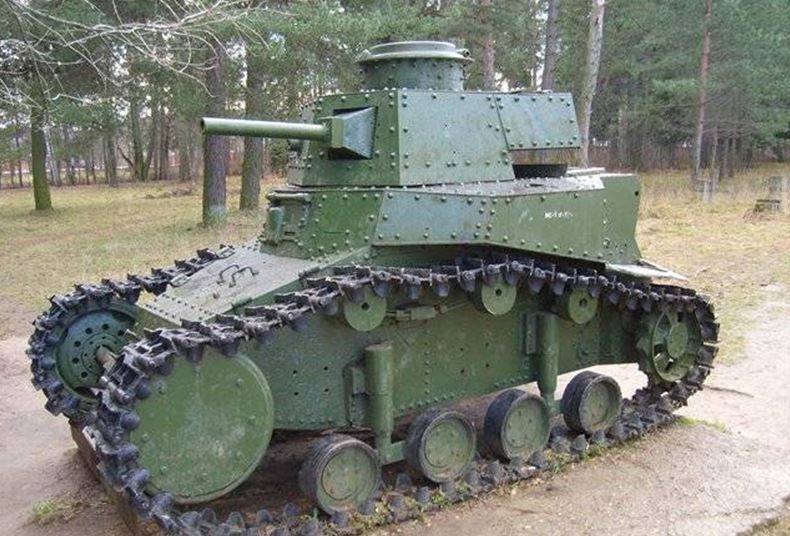
For its time, the T-18 tank proved to be quite mobile and capable of supporting infantry and cavalry in the offensive, but it was not capable of overcoming the enemy’s prepared anti-tank defenses.
During production in 1928 -1931, 957 machines entered the troops. In the 1938-1939, it was upgraded, the 45mm gun was installed and the tank's weight increased to 7,25 tons. Until the second half of the thirties, the T-18 formed the basis of the armored forces of the Soviet Union, after which it was ousted by the BT and T-26 tanks.
Light tank T-19
In 1929, it was decided to develop a new, more powerful T-19 tank to replace the T-18. In a short time, a tank was developed and prototypes were made in 1931.
The tank was a classic layout with a crew of three people and a weight of 8,05 tons. According to its main characteristics, it was not fundamentally different from the T-18. The design of the tank was riveted, the body armor is the same as that of the T-18, the turret, the forehead and the sides of the hull are 16 mm thick, the roof and the bottom 8 mm. The armament consisted of a Hotchkis L / 37 20-mm cannon and two Degtyarev DT-7,62 29-mm machine guns, one of which was mounted in the tank body in a ball bearing.
There was an attempt to install the engine Mikulin 100 horsepower, providing speed 27 km per hour, but it was not developed in time.
The chassis of the T-19 was borrowed from the French Renault NC-27 tank and consisted of 12 small-diameter track rollers with vertical spring suspension interlocked in three trucks, 4 supporting rollers, a front driving and rear guide wheels.
Tank T-19 had a lot of new design decisions that overly complicated its design. The “tail” of the tank was removed, instead it could overcome wide ditches by “coupling” two tanks with the help of truss structures. There was an attempt to make the tank floating with screws or mounted floating equipment (inflatable or frame floats), but it was not possible to fully implement it.
The tests of the tank carried out in 1931-1932 showed its low reliability and excessive technical complexity, and the tank turned out to be very expensive. The design of the T-19 tank was inferior to the Vickers Six-ton lightweight double-turbo tanks purchased in 1930 year, on the basis of which the Soviet light tank T-1931 was developed and put into mass production in 26. The focus was on the development and implementation of the T-26 light tank.
Wedge t-xnumx
The T-27 wedge was developed based on the Carden-Loyd Mk.IV wedge according to the license acquired in 1930. The wedge was a lightly armored machine gun machine, which was assigned the task of reconnaissance and escort infantry on the battlefield.
T-27 was a classic turretless wedge. In front of the hull there was a transmission, in the middle part of the engine and in the stern crew consisting of a 2 man (driver and commander-gunner). The driver was located in the building on the left, and the commander on the right. On the roof of the hull were two manholes for landing the crew.
The design was riveted, bulletproof armoring, the thickness of the armor of the forehead and sides of the hull 10 mm, roof 6mm, bottom 4 mm. Weight tanketki was 2,7 tons.
Armament consisted of 7,62-mm machine gun DT, located in the front flap of the body.
The Ford-AA (GAZ-AA) engine with a capacity of 40 l was used as a power plant. with. and a transmission borrowed from a Ford-AA / GAZ-AA truck. Speed tanketki on the highway 40 km per hour, power reserve 120 km.
The undercarriage had a semi-rigid suspension type suspension consisting of six dual support rollers interlocked in pairs in trucks with cushioning of leaf springs.
By the beginning of the Great Patriotic War in the army there were X-NUMX T-2343 tank-shoes, dispersed in various military districts and military units.
Light amphibious tank T-37A
The T-37A light amphibious tank was developed in 1932 on the basis of the layout of the Vickers-Cardin-Lloyd light amphibious English tank, the party of which was acquired by the Soviet Union in England in 1932, and the developments of Soviet designers on the experienced T-37 amphibious tanks and T-41. The tank was assigned to perform the tasks of communications, reconnaissance and combat escort units on the march, as well as direct infantry support on the battlefield.
The tank was serially produced in 1933 — 1936 and was replaced by a more advanced T-38, developed on the basis of the T-37. A total of X-NUMX T-2566 tanks were manufactured.
The tank had a layout similar to the English prototype, the control compartment, combined with the combat and engine compartment, was located in the middle part of the tank, transmission in the nose. The stern housed the cooling system, fuel tank and drive propeller. The crew of the tank consisted of two people: the driver, who was in the left part of the department of management, and the commander, who was in the shifted to the starboard tower. The weight of the tank was 3,2 tons.
Reservations T-37A was bulletproof. The tank hull was box-shaped and assembled on a skeleton of armor plates with rivets and welding. The cylindrical tower was designed to be similar to the case on the right half of the control compartment. The turn of the tower was carried out manually with the help of the arms welded inside. For the landing of the crew there were hatches in the roof of the tower and the cabin, the driver also had a viewing hatch in the frontal part of the cabin.
The armament of the tank consisted of an 7,62-mm DT machine gun mounted in a ball mount in the front sheet of the turret.
As the power plant used engine GAZ-AA power 40 l. with. For movement on the water was a two-bladed reversible propeller. The turn of the tank on the water was carried out using the steering wheel. The speed of the tank on the highway 40 km / h, afloat 6 km / h.
The chassis of the T-37A on each side consisted of four single rubberized rollers, three rubberized supporting rollers, a front drive wheel and a rubberized sloth. The suspension of support rollers is interlocked in pairs according to the “scissors” scheme: each support roller was mounted on one end of a triangular balancer, the other end of which was hinged to the tank body, and the third was connected in pairs with a spring to the second balancer of the trolley.
The T-37A tank at the beginning and the middle of the 1930-ies was practically the only serial amphibious tank, the work abroad in this direction was limited only to the creation of prototypes. Further development of the concept of a floating tank led to the creation of the T-40 tank.
Light amphibious tank T-38
The floating tank T-38 was developed in 1936 and essentially was a modification of the T-37 tank. The tank was mass-produced from 1936 to 1939 years, in total 1340 tanks were produced.
The layout of the T-38 remained the same, but the tower was located on the left half of the hull, and the workplace of the driver on the right. The tank had a hull form similar to that of the T-37A, but became much wider and lower. The tower was borrowed from T-37A without significant changes. The transmission and design of the suspension carts were also refined. The weight of the tank increased to 3,3 tons.
Among the model range of Soviet tanks of the end of the 1930-ies, the T-38 was one of the least efficient vehicles. The machine was weak even by the standards of that time, weapons and armor, unsatisfactory seaworthiness, which questioned the possibility of its use in amphibious and amphibious operations. Due to the lack of radio stations, most T-38 did not cope well with the role of a reconnaissance tank, given their poor maneuverability outside the roads.
Light amphibious tank T-40
Lightweight amphibious tank T-40 was developed in 1939 year and in the same year adopted. Serially produced until December 1941 year. Total was released 960 tanks.
The tank was designed to address the shortcomings of the floating tank T-38. Ways to improve the tank was to create a convenient hull shape, adapted for movement afloat, increasing the firepower and security of the tank, improving the working conditions of the crew.
The layout of the tank changed somewhat, the transmission compartment was in the forward part of the hull, the control compartment was in the center in the front of the hull, in the middle of the tank on the right was the engine compartment on the right and the fighting compartment with a conical round turret on the left; Unlike the T-38, the driver and commander were housed together in one manned compartment.
For the landing of the driver, a hatch was located on the roof of the podbash armor plate, and for the commander in the roof of the tower there was a semicircular hatch. For the convenience of the mechanic - the driver when moving afloat in the frontal part of the body was installed flap.
The hull of the tank was welded from rolled armored plates, some of which were fastened with bolts. The armor protection of the tank was anti-bullet, the thickness of the armor of the turret and the forehead of the hull (15-20) mm, the hull sides (13 - 15) mm, the roof and the bottom of the 5mm. The weight of the tank was 5,5 tons.
The tank’s armament was housed in a turret and consisted of a 12,7 mm heavy machine gun, a DShK, and a DT machine gun, 7,62mm, paired with it. A small batch of T-40 tanks were equipped with a 20mm ShVAK-T gun.
The engine used was a GAZ-11 hp 85 engine providing speed on the 44 highway km / h and afloat 6 km / h. Water propeller included a propeller in a hydrodynamic niche and navigable rudders.
In the chassis of the T-40 was used individual torsion bar suspension. On each board, it included 4 single-pitch small-diameter track rollers with rubber bands, 3 supporting single-pitched rollers with external cushioning, a drive wheel in front and a sloth behind.
Light tank T-40 completed the generation of Soviet amphibious tanks of the pre-war period, according to their characteristics they were at the level of foreign samples. A total of X-NUMX T-7209 tank and T-27A, T-37 and T-38 amphibious tanks were released before the war. They failed to prove themselves as they were, because in the initial period of the war they were often used to support the attacking infantry and most of the tanks were simply abandoned or destroyed.
The floating tank T-40 became the prototype of the light tank T-60, which was mass produced during the war.
To be continued ...
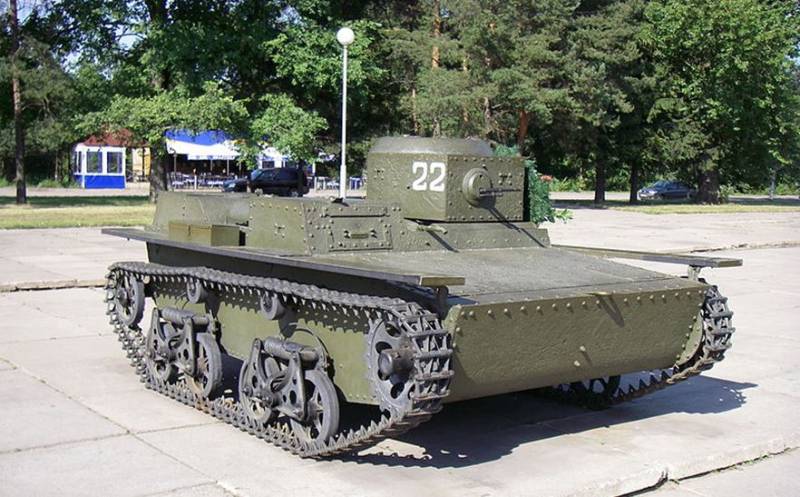
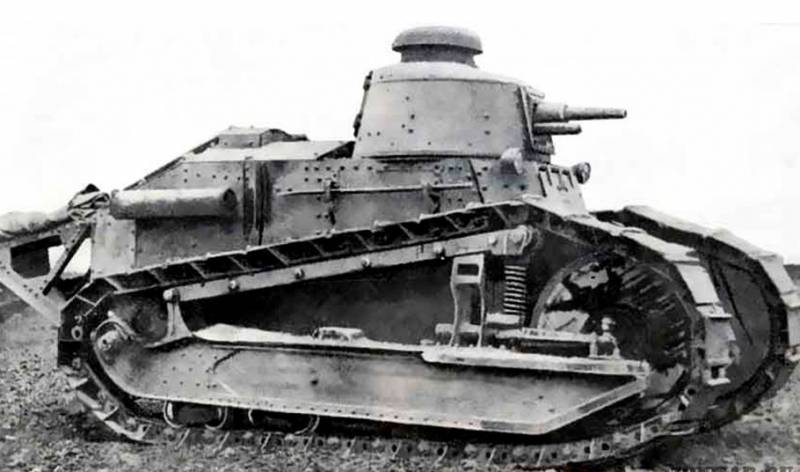
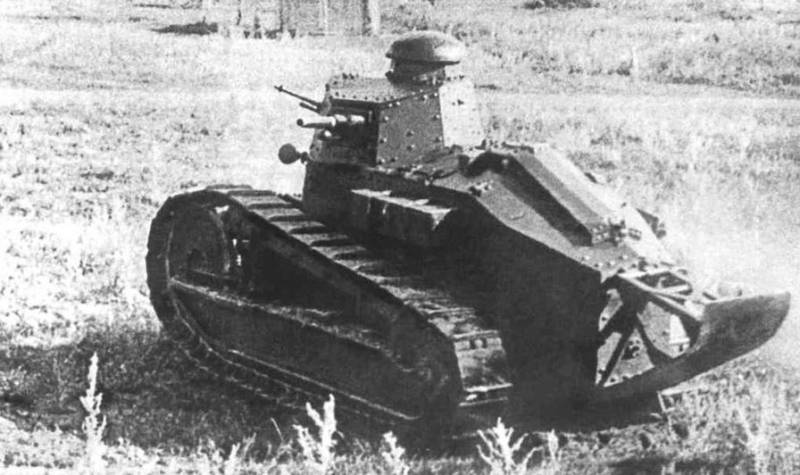
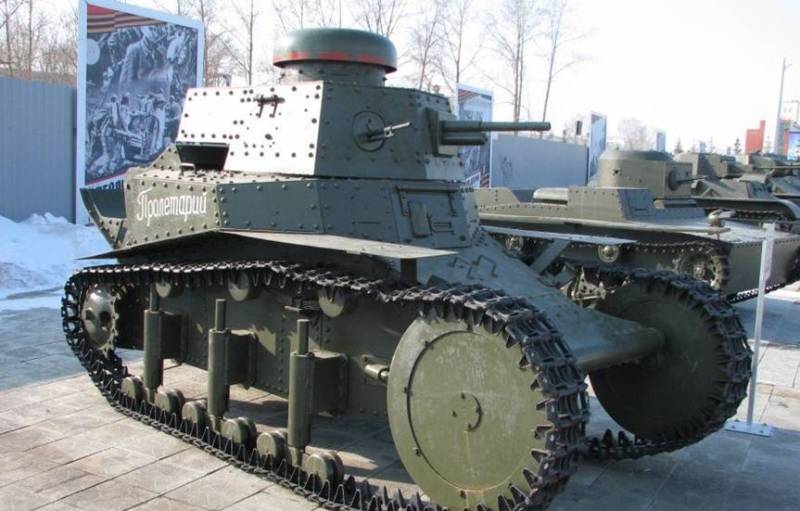
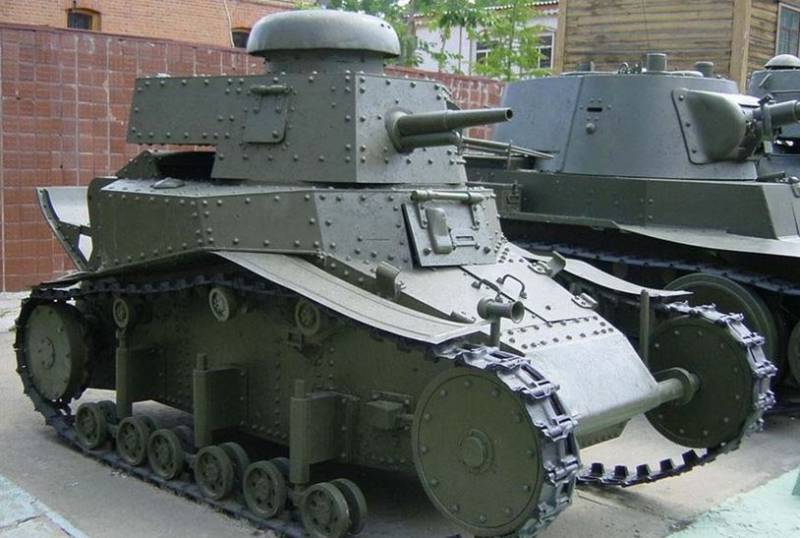
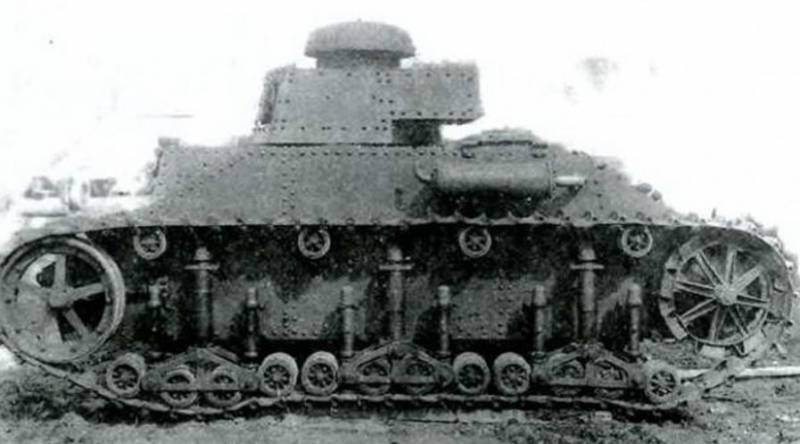
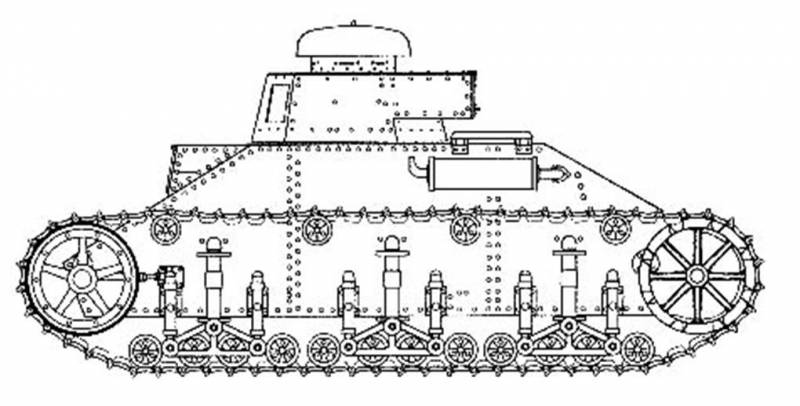
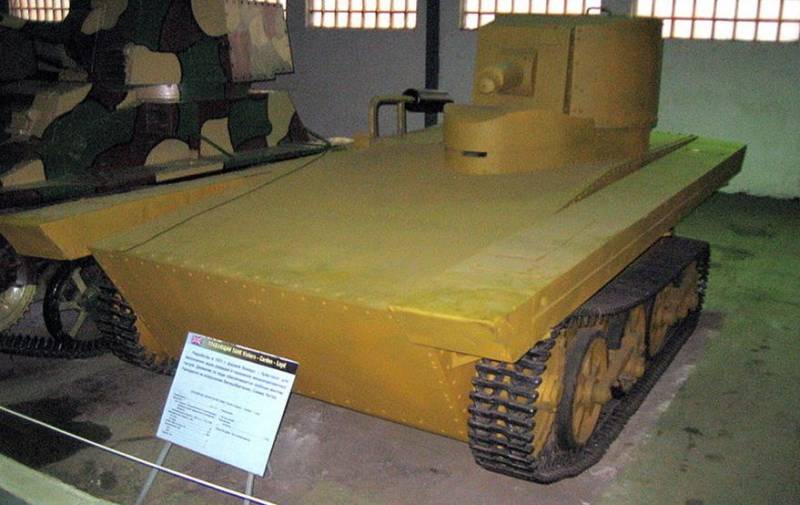
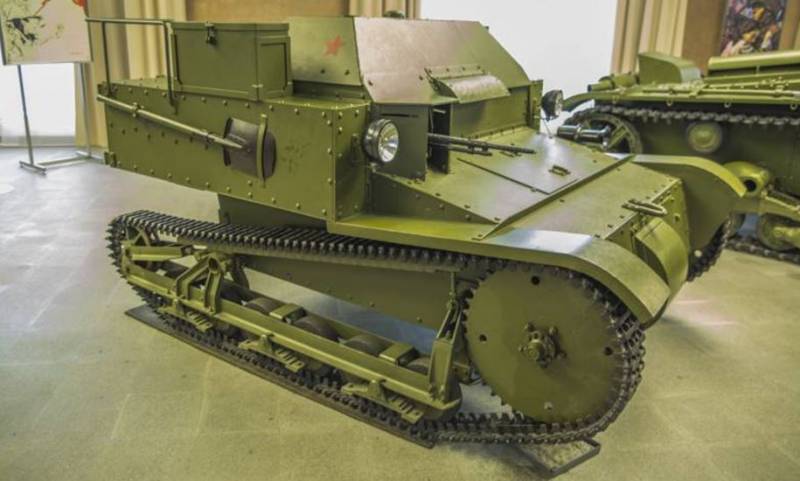
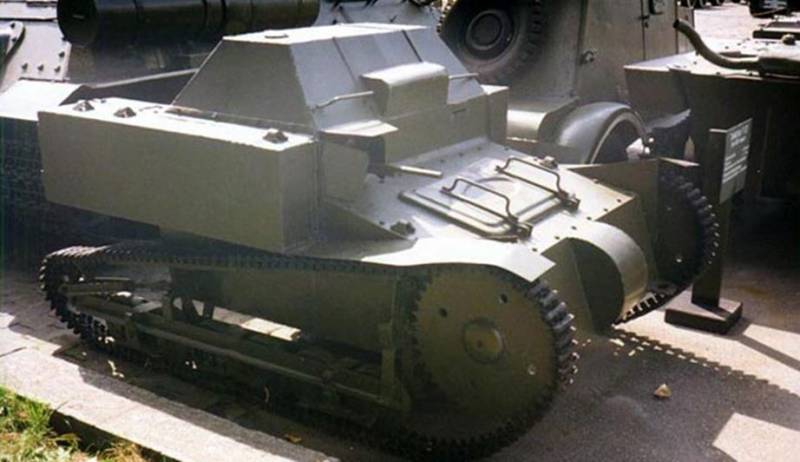
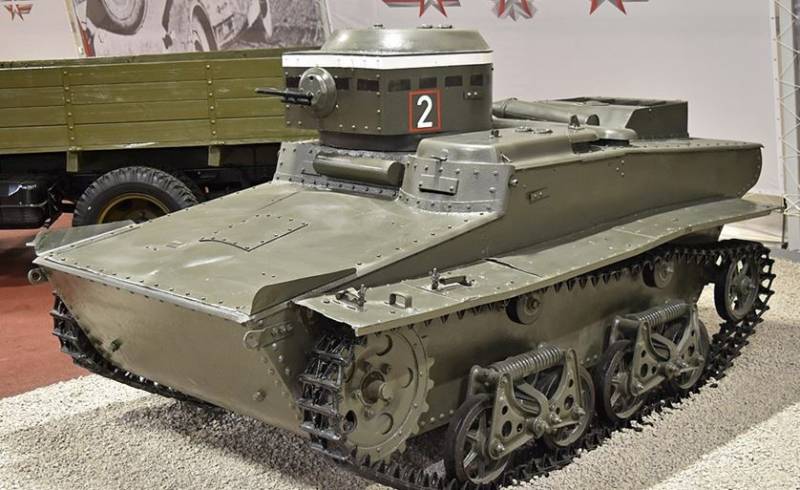
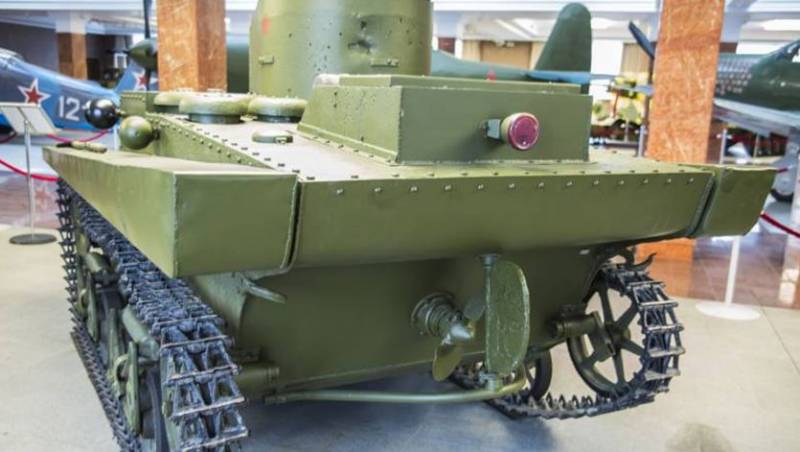
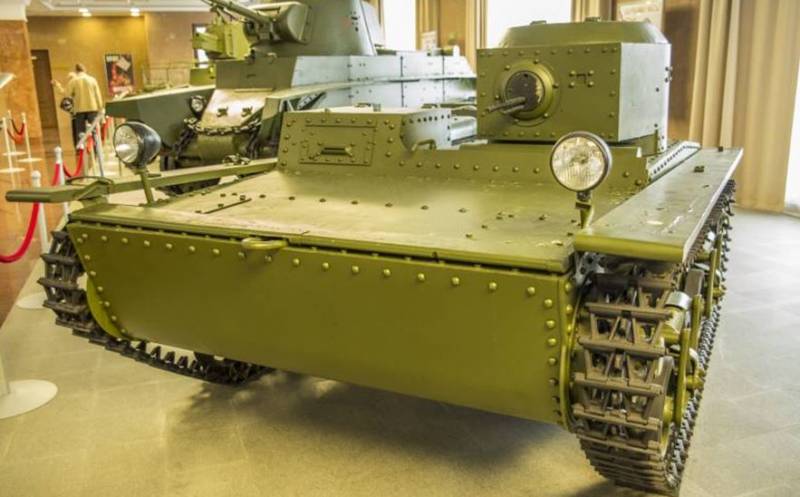
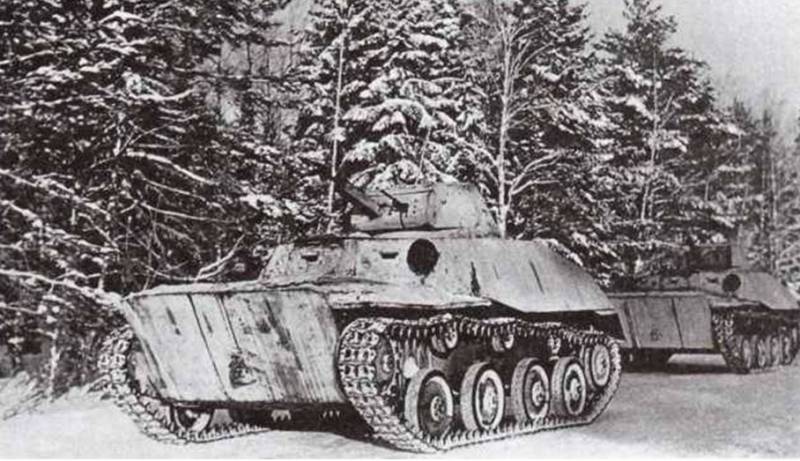
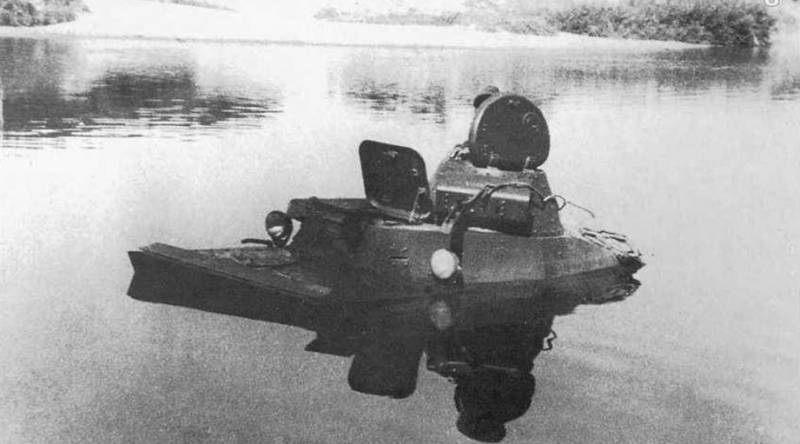
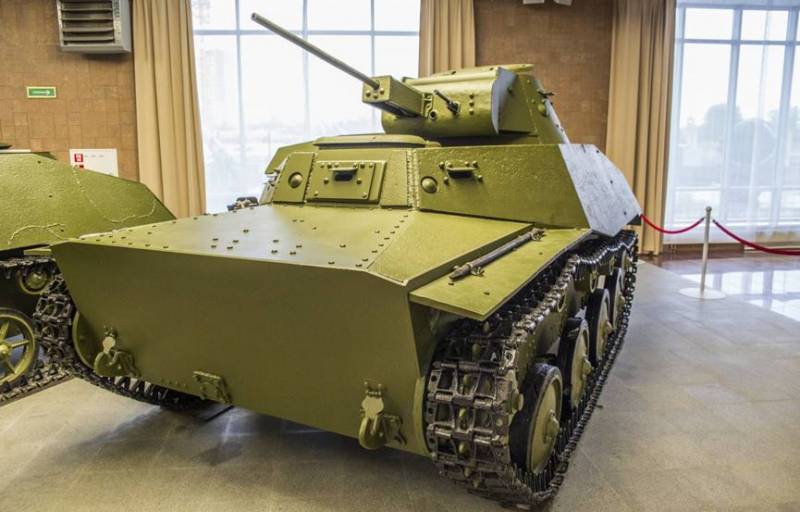
Information